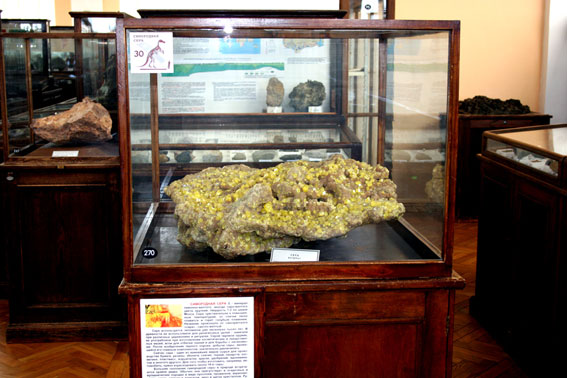Sulphur in nature is distributed mainly in the form of sulphur and oxygen compounds, represented by sulphides (pyrite, marcasite, etc.) and sulphates (gypsum, anhydrite, etc.), is present in natural gases (hydrogen sulphide, sulphur dioxide), oils, and waters of some mineral springs, found in animals and plants. Only a small part of sulphur, and only in the upper horizons of the earth's crust, is found in native form, but it is precisely this that is of main industrial importance, since it is extracted most simply and cheaply.
Sulphur has served humankind for several thousand years. The deposits of this yellow combustible substance were developed by the ancient Greeks and Romans. It was used for religious and mystical purposes, lit at various ceremonies and rituals. In addition, weapons were blackened with sulphur, it was used in the manufacture of cosmetic and medicinal ointments, it was burned to bleach fabrics and to fight insects. Sulphur mining increased significantly after black powder was invented.
Nowadays, sulphur is one of the most important raw materials for many chemical industries. It is necessary for the manufacture of paper and rubber, ebonite and matches, fabrics and medicines, cosmetics, plastics, explosives and paint, fertilizers and pesticides, and much more. In order to make, for example, a car, you need about 14 kg of sulphur.
Large accumulations of native sulphur in nature are extremely rare. It is usually present in sedimentary and volcanic rocks in the form of interbeds, veinlets, disseminations, crusts, sinter aggregates, druses, and brushes of crystals. Ores are sulphur-bearing rocks with a sulphur content of at least 5-8%.
